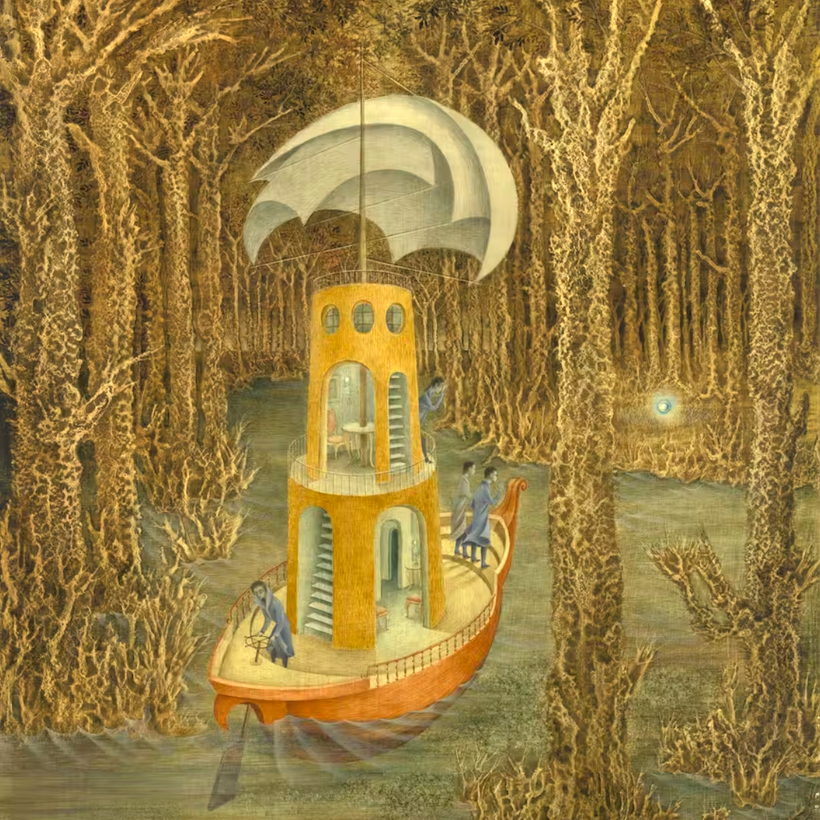For decades, work by the Spanish-born painter Remedios Varo, largely unknown outside Mexico, her adopted home, was a cultish pleasure. A recent exhibition at the Gallery Wendi Norris, in San Francisco, and a retrospective at the Art Institute of Chicago—“Remedios Varo: Science Fictions,” opening today—signal how far into the spotlight the artist has come.

Born in 1908, Varo grew up under the tutelage of her father, a domineering mechanical engineer who gifted her with technical skills and a reverence for museums and science. From her religious mother, she absorbed a love of nature. Chafing under their watchful eyes, Varo attended a prestigious art school in Madrid and then married fellow student Gerardo Lizárraga, with whom she escaped to Paris’s lively art scene. But with money short, the couple returned to Barcelona and began to work in advertising. Varo simultaneously threw herself into the vibrant milieu of the Spanish Surrealists and intimate relationships with the artists Esteban Francés and Óscar Domínguez. For her, the boundaries between dreams and reality were porous. Surrealism was the portal to a new way of life, not just an artistic practice.
As the Spanish Civil War engulfed the country, Varo fled to Paris with Francés and the poet Benjamin Péret, this time establishing herself in the important French Surrealist circle. (In a scuffle over her between Francés and Domínguez, the painter Victor Brauner, a bystander, lost an eye. Remarkably, after her passion waned, Varo was able to convert her many lovers into lifelong friends.) Exquisite corpse, the Surrealist game that resulted in surprising graphic juxtapositions, was in fact the perfect metaphor for her mercurial, polyamorous life. In 1941, once again in flight from war and imprisonment, Varo made her way to Marseilles, where she and other European artists awaited transport from Nazi aggression.

Mexico changed everything. Among fellow expatriates, Varo finally found stability. She forged deep friendships with the photographer Kati Horna and the painter Leonora Carrington, who felt women had secret wisdom and special powers. They became known as “the Three Witches”! Carrington was particularly kindred, offering new directions and energies as the two concocted fanciful theatrical presentations, artistic games, and cooking experiments.
Varo also collaborated with Marc Chagall on costume design and honed experimental painting techniques on toys and furniture. Advertising remained an important paycheck and a proving ground for new theories, especially in work for Casa Bayer, the pharmaceutical company. Though Varo kept her many exes close, she found a more permanent relationship with Walter Gruen, the owner of a music store. He freed her from commercial work so she could take up the meticulous, magical painting that would absorb her for the rest of her short life.

Generally anchored by a character who resembled her—the pointed nose, chin, and shoes are often a dead giveaway—Varo’s paintings contain architectural elements, whimsical contraptions, and refined experimental techniques. As a storyteller and writer, she imported images from literature and geology as well as traditional embroidery, knitting, and sewing, all of which had occult and metaphysical powers, if properly deployed. She aimed to transport us through time and space and for inspiration kept crystals steeped in moonlight on her easel. This union of art, science, and nature fueled enchanting, playful works layered with complex meanings. In The Creation of the Birds (1957), the interplay of light and paint is a form of alchemy. In Harmony (1956), music lives in the walls and floors. In each painting, a Varo-esque figure is the shaman. Like Agnes Pelton and Hilma af Klint, Varo sought answers from spiritual gurus. But her own evolution was paramount. “I don’t belong to any group,” she insisted.
Varo died suddenly at age 54, in 1963. In all, there were a scant 10 years of production and fewer than 400 works. The Art Institute of Chicago is the only venue for this captivating presentation.
“Remedios Varo: Science Fictions” is on at the Art Institute of Chicago through November 27
Patricia Zohn has contributed to numerous publications, including Wallpaper, Artnet, the Huffington Post, The New York Times, and the Los Angeles Times

